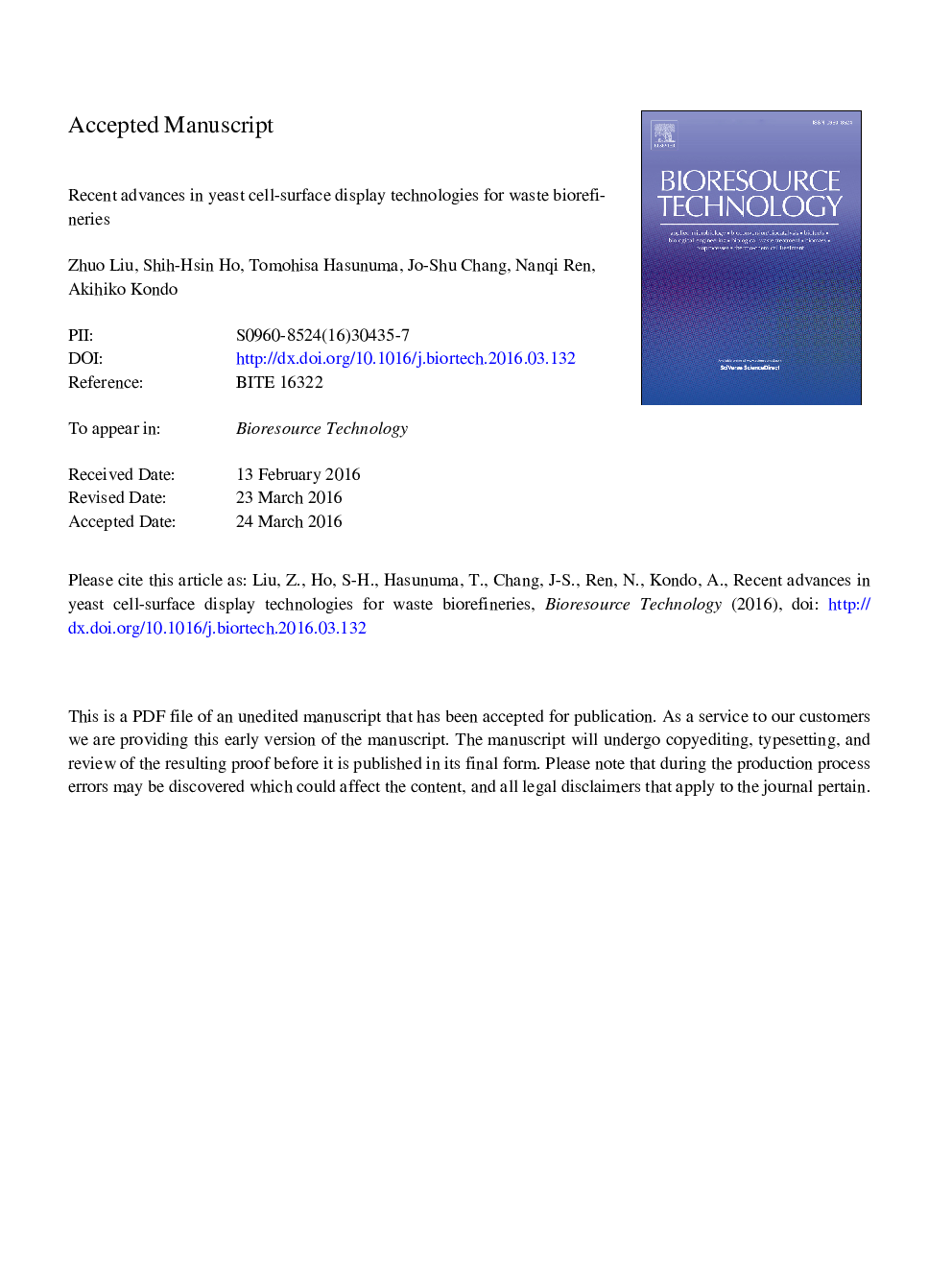| Article ID | Journal | Published Year | Pages | File Type |
|---|---|---|---|---|
| 7070949 | Bioresource Technology | 2016 | 36 Pages |
Abstract
Waste biorefinery aims to maximize the output of value-added products from various artificial/agricultural wastes by using integrated bioprocesses. To make waste biorefinery economically feasible, it is thus necessary to develop a low-cost, environment-friendly technique to perform simultaneous biodegradation and bioconversion of waste materials. Cell-surface display engineering is a novel, cost-effective technique that can auto-immobilize proteins on the cell exterior of microorganisms, and has been applied for use with waste biofinery. Through tethering different enzymes (e.g., cellulase, lipase, and protease) or metal-binding peptides on cell surfaces, various yeast strains can effectively produce biofuels and biochemicals from sugar/protein-rich waste materials, catalyze waste oils into biodiesels, or retrieve heavy metals from wastewater. This review critically summarizes recent applications of yeast cell-surface display on various types of waste biorefineries, highlighting its potential and future challenges with regard to commercializing this technology.
Related Topics
Physical Sciences and Engineering
Chemical Engineering
Process Chemistry and Technology
Authors
Zhuo Liu, Shih-Hsin Ho, Tomohisa Hasunuma, Jo-Shu Chang, Nan-Qi Ren, Akihiko Kondo,
